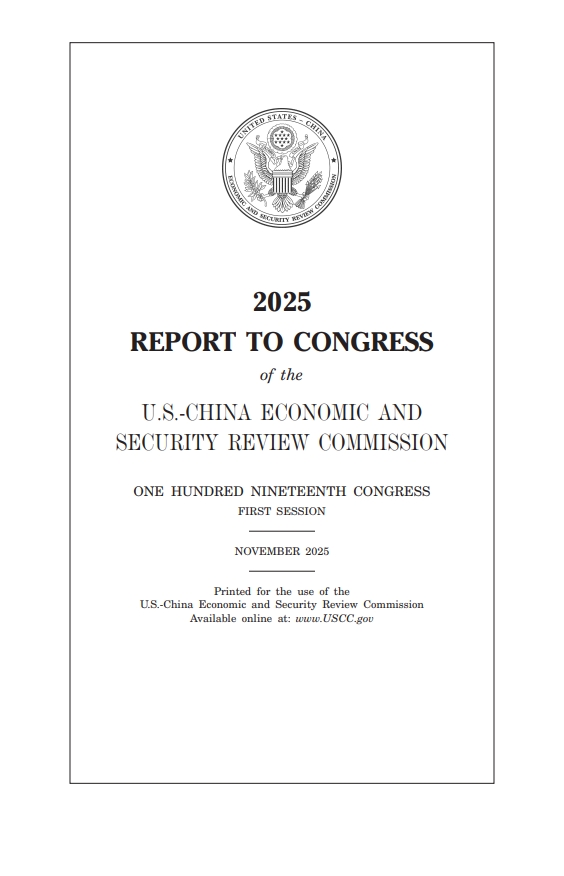
ㅇ 미국 연방의회 자문기구 미-중 경제안보검토위원회(UCESRC)의 보고서는 중국이 북한의 사이버 범죄 및 군사 활동을 지원하고 있다고 분석함
ㅇ 북한 사이버 부대가 중국 영토에서 활동하며, 정보 수집과 자금 확보 목적의 범죄에 관여함
ㅇ 중국 내 북한 IT 노동자들도 사이버 범죄에 가담하는 것으로 보고됨
ㅇ 2022년 미국 의료기관 대상 랜섬웨어 공격이 대표 사례로 언급됨
□ 사이버 작전의 전략적 활용
ㅇ 북한 해커들은 2024년 약 13억4천만 달러 수익을 올린 것으로 추산됨
ㅇ 중국의 IT 인프라를 활용하면서 물리적 위치를 중국에 두는 방식으로 책임 회피 가능함
ㅇ 미국 재무부는 ‘랴오닝 중국 무역 유한회사’를 제재 명단에 올렸으며, 해당 업체는 북한 IT 인력에게 전자 장비를 공급한 것으로 보고됨
□ 군사 기술 지원과 제재 회피
ㅇ 중국은 유엔 제재 이후에도 북한에 군사 전용 가능 기술을 지원하고 있음
ㅇ 북한의 화성-13형 미사일 발사대는 중국 국유 군수업체 트럭을 개조한 것으로 분석됨
ㅇ 드론 프로그램과 위성 운영 기술자 훈련도 중국이 지원한 사례로 제시됨
ㅇ 기술 지원은 북한의 군사 역량 강화에 직결된다는 평가가 있음
□ 북중 관계의 전략적 구조
ㅇ 중국은 북한의 핵 개발 독자 노선에 불만을 갖고 있음에도 전략적 가치 때문에 보호를 지속함
ㅇ 북한은 중국 내 사이버 요원을 통해 IT 인프라 교란 시에도 작전 유지 가능함
ㅇ 중국은 북한을 통해 미국의 글로벌 영향력 약화를 도모하고 있음
ㅇ 북중 관계는 지정학적 완충지대 역할과 전략적 자산 활용 측면에서 구조적으로 강화되는 추세임
□ 미국의 대응 방향
ㅇ 중국 중심의 북한·러시아·이란 전략 협력 심화에 대한 경고가 제기됨
ㅇ 미국은 동맹국과의 공조를 통해 불안정 행위 억제 필요성을 강조함
ㅇ 동시다발적 위기 발생 가능성에 대비한 전략 수립이 요구됨
[출처] '中, 北 사이버범죄 지원'…美의회, 북중관계 안보위협 평가 (2025.11.19.) / 연합뉴스
목차
Transmittal Letter to the Congress iii
Commissioners Approving the Report v
Introduction 1
Executive Summary 7
Key Recommendations 29
2025 Report to Congress of the U.S.-China Economic and Security Review Commission
Part I: The Year in Review 37
Chapter 1: U.S.-China Economic and Trade Relations (Year in Review) 37
Executive Summary 37
Key Findings 38
Introduction 39
China’s Macroeconomic Outlook 39
U.S.-China Economic Relations 53
China’s Technological Outlook—Progress, Obstacles, and Results 59
China’s External Economic Relations 66
Chapter 2: U.S.-China Security and Foreign Affairs (Year in Review) 87
Executive Summary 87
Key Findings 87
Introduction 88
China’s Leaders Prioritized Domestic Social Stability in the Face of a “Turbulent” External Environment 89
China Remained Focused on Ensuring Military Loyalty and Modernization 91
China Sought to Expand Its Influence around the World 95
China Attempted to Leverage International Institutions to Assert Its National Security Agenda 120
Part II: Efforts to Remake the World Order 143
Chapter 3: Axis of Autocracy: China’s Revisionist Ambitions with Russia, Iran, and North Korea 143
Executive Summary 143
Key Findings 144
Introduction 145
The Relationships Were Built over Decades but Deepened by the Conflict in Ukraine 146
Overlapping Goals Undergird Strategic Alignment 148
China, Russia, Iran, and North Korea Cooperate Multilaterally in Various Ways 151
China Has Sought to Balance Strategic Partnerships with the Desire for Global Legitimacy 159
China’s Bilateral Relations with Russia, Iran, and North Korea 161
Implications for the United States 182
Recommendations 183
Chapter 4: Crossroads of Competition: China and Southeast Asia 199
Executive Summary 199
Key Findings 199
Introduction 201
China Seeks to Establish Regional Hegemony in Southeast Asia 202
China Uses Many Tools to Develop Control over the Security Environment in Southeast Asia 216
China Increases Its Leverage in Southeast Asia through Expanding Trade and Investment 228
Implications for the United States 236
Recommendations 238
Appendix: China’s Exploitation of Scam Centers in Southeast Asia 241
Chapter 5: Small Islands, Big Stakes: China’s Playbook in the Pacific Islands 271
Executive Summary 271
Key Findings 271
Introduction 272
The Pacific Islands Region Is Key to Strategic Competition in the Indo-Pacific 273
China Is Taking a Multifaceted Approach to Deepening Ties with the Pacific Islands and Undermining U.S. Influence 278
China Advances Its Security Presence in the Pacific 291
Implications for the United States 297
Recommendations 299
Part III: Competition in Contested Frontiers 313
Chapter 6: Interlocking Innovation Flywheels: China’s Manufacturing and Innovation Engine 313
Executive Summary 313
Key Findings 314
Introduction 315
China’s Whole-of-Nation Drive toward Industrial Policy 316
Industrial Commons Provides Foundation for Continued Manufacturing Leadership 332
China’s Efforts to Dominate the Bio-Economy of the Future 341
Implications for the United States 349
Recommendations 351
Chapter 7: The Final Frontier: China’s Ambitions to Dominate Space 370
Executive Summary 370
Key Findings 371
Introduction 372
Intensifying U.S.-China Competition in Space 373
China’s Military Has Rapidly Developed Space Capabilities 375
China Uses Its Space Program to Leverage Relations with Developing Countries to Accrue Military Advantages and Geopolitical Influence 382
China’s Commercial Space Sector Is Growing Rapidly 387
China’s Civil Space Program Seeks to Outpace NASA, Become World Leader 402
Implications for the United States 406
Recommendations 408
Part IV: Exposure to China’s Economic Distortions and Coercion 429
Chapter 8: China Shock 2.0 429
Executive Summary 429
Key Findings 430
Introduction 431
China Shock 2.0: Impacts and Origins 431
China Shock 2.0 Will Hurt Both Developed and Emerging Economies 442
Southeast Asia Case Study 448
Implications for the United States 457
Recommendations 458
Chapter 9: Chained to China: Beijing’s Weaponization of Supply Chains 472
Executive Summary 472
Key Findings 473
Introduction 474
The Imperative to Address China’s Leverage over the U.S. Economy 475
China’s Capacity to Weaponize Supply Chain Vulnerabilities Threatens U.S. Economic and National Security 482
The United States Needs a Coherent Long-Term Commitment to Reduce China’s Supply Chain Leverage 507
Implications for the United States 511
Recommendations 512
Chapter 10: Power Surge: China’s Electrification Drive and Push for Global Energy Dominance 537
Executive Summary 537
Key Findings 538
Introduction 539
China’s Domestic Energy Strategy Increases Control of Key New Energy Sectors 539
China’s International Energy Footprint Is Growing 554
China’s Growing Role in Global Energy Systems Creates Supply Chain and Cybersecurity Risks 559
Implications for the United States 574
Recommendations 576
Part V: Taiwan and Hong Kong 601
Chapter 11: Taiwan 601
Executive Summary 601
Key Findings 601
Introduction 602
Beijing Continues to Escalate Its Pressure Campaign against Taiwan 603
Taiwan Has Made Efforts to Enhance Deterrence and Resilience despite Political Gridlock 616
United States Expands Defense and Economic Cooperation with Taiwan 623
Implications for the United States 633
Recommendations 634
Chapter 12: Hong Kong 650
Executive Summary 650
Key Findings 650
Introduction 651
Crackdown Continues as Hong Kong Strengthens Tools for Repression 651
Hong Kong’s Economic Status Independent of the Mainland Continues to Shrink 656
Implications for the United States 666
Recommendations 667
Comprehensive List of the Commission’s Recommendations 677
Appendices:
Appendix I: Charter 697
Appendix II: Background of Commissioners 705
Appendix III: Public Hearings of the Commission in 2025 715
Appendix IIIA: List of Witnesses Testifying before the Commission in 2025 719
Appendix IV: List of Research Material 723
Appendix V: Conflict of Interest and Lobbying Disclosure Reporting 725
Appendix VI: Acronyms and Abbreviations 727
2025 Commission Staff and Acknowledgements 733
해시태그
관련자료
AI 100자 요약·번역서비스
인공지능이 자동으로 요약·번역한 내용입니다.
2025 Report to Congress of the U.S.-China Economic and Security Review Commission
(미-중 경제안보검토위원회 2025년 의회 제출 보고서)



